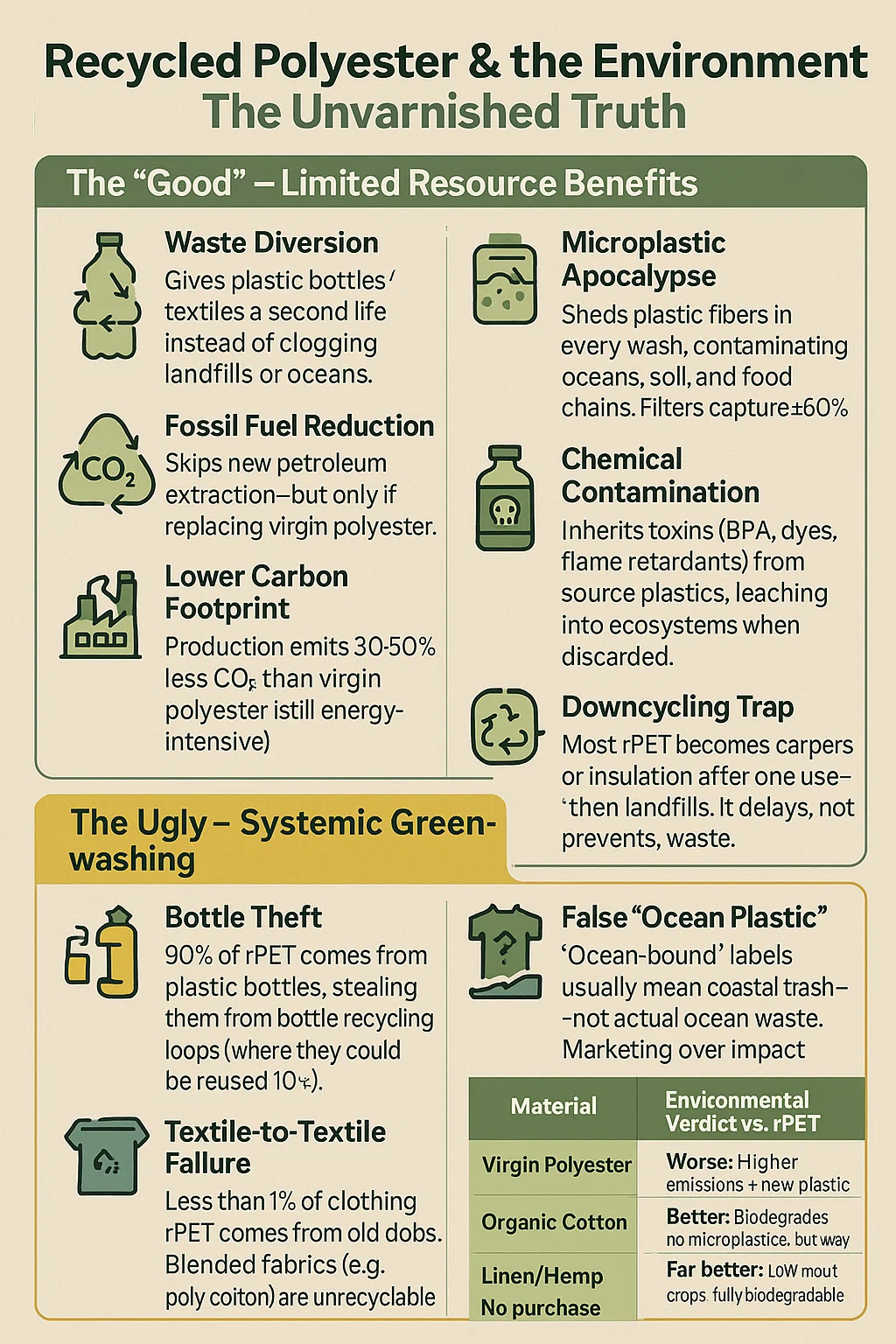Search by posts
Calendar
Industry News
 By Admin
By Admin
Is recycled polyester good for the environment?
Recycled Polyester & the Environment: The Unvarnished Truth
Content
1. The "Good" – Limited Resource Benefits
Waste Diversion Gives plastic bottles/textiles a second life instead of clogging landfills or oceans.
Fossil Fuel Reduction Skips new petroleum extraction—but only if replacing virgin polyester.
Lower Carbon Footprint Production emits 30-50% less CO₂ than virgin polyester (still energy-intensive).
2. The Bad – Unresolved Harms
Microplastic Apocalypse Sheds plastic fibers in every wash, contaminating oceans, soil, and food chains. Filters capture ≤60%.
Chemical Contamination Inherits toxins (BPA, dyes, flame retardants) from source plastics, leaching into ecosystems when discarded.
Downcycling Trap Most rPET becomes carpets or insulation after one use—then landfills. It delays, not prevents, waste.
3. The Ugly – Systemic Greenwashing
Bottle Theft 90% of rPET comes from plastic bottles, stealing them from bottle-recycling loops (where they could be reused 10x).
Textile-to-Textile Failure Less than 1% of clothing rPET comes from old clothes. Blended fabrics (e.g., poly-cotton) are unrecyclable.
False "Ocean Plastic" "Ocean-bound" labels usually mean coastal trash—not actual ocean waste. Marketing over impact.
4. Compared to Alternatives
| Material | Environmental Verdict vs. rPET |
|---|---|
| Virgin Polyester | Worse: Higher emissions + new plastic |
| Organic Cotton | Better: Biodegrades, no microplastics—but water-heavy |
| Linen/Hemp | Far better: Low-input crops, fully biodegradable |
| No purchase | Best: Reduces demand for all synthetics |


